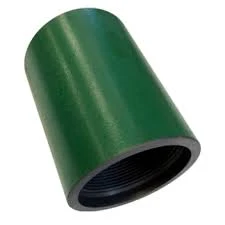- Afrikaans
- Albanian
- Amharic
- Arabic
- Armenian
- Azerbaijani
- Basque
- Belarusian
- Bengali
- Bosnian
- Bulgarian
- Catalan
- Cebuano
- Corsican
- Croatian
- Czech
- Danish
- Dutch
- English
- Esperanto
- Estonian
- Finnish
- French
- Frisian
- Galician
- Georgian
- German
- Greek
- Gujarati
- Haitian Creole
- hausa
- hawaiian
- Hebrew
- Hindi
- Miao
- Hungarian
- Icelandic
- igbo
- Indonesian
- irish
- Italian
- Japanese
- Javanese
- Kannada
- kazakh
- Khmer
- Rwandese
- Korean
- Kurdish
- Kyrgyz
- Lao
- Latin
- Latvian
- Lithuanian
- Luxembourgish
- Macedonian
- Malgashi
- Malay
- Malayalam
- Maltese
- Maori
- Marathi
- Mongolian
- Myanmar
- Nepali
- Norwegian
- Norwegian
- Occitan
- Pashto
- Persian
- Polish
- Portuguese
- Punjabi
- Romanian
- Russian
- Samoan
- Scottish Gaelic
- Serbian
- Sesotho
- Shona
- Sindhi
- Sinhala
- Slovak
- Slovenian
- Somali
- Spanish
- Sundanese
- Swahili
- Swedish
- Tagalog
- Tajik
- Tamil
- Tatar
- Telugu
- Thai
- Turkish
- Turkmen
- Ukrainian
- Urdu
- Uighur
- Uzbek
- Vietnamese
- Welsh
- Bantu
- Yiddish
- Yoruba
- Zulu
pipe bull plug
Understanding the Pipe Bull Plug A Vital Component in Pipeline Systems
In the world of industrial plumbing and pipeline systems, each component plays a crucial role in maintaining efficiency and safety. One such essential component is the pipe bull plug. While it may seem like a simple item, its significance in the assembly and functioning of piping systems cannot be overstated.
A pipe bull plug is designed to seal the end of a pipe or fitting, thereby preventing the flow of liquids or gases. Typically made from materials such as PVC, stainless steel, or carbon steel, these plugs come in various sizes and specifications to fit different pipe dimensions. Their primary function is to provide a tight seal, ensuring that contents within the pipe do not leak out, which is critical in maintaining the system's integrity.
One of the primary applications of bull plugs is in construction and maintenance scenarios. When pipes need to be temporarily closed off during installation or repair, a bull plug is often employed to stop the flow. This capability is essential in avoiding spills or leaks that could lead to environmental hazards or workplace accidents. By effectively sealing off sections of a piping system, bull plugs allow for safer and more efficient repair work, minimizing downtime.
Moreover, bull plugs are instrumental in system testing procedures. Before a pipeline is put into commission, it often undergoes pressure testing to ensure that it can handle the required pressures without failing. Bull plugs are used to seal the ends of the pipes during these tests, allowing operators to determine any weaknesses or potential points of failure. If leaks are detected during testing, repairs can be made before the system becomes operational, thus enhancing overall safety and reliability.
pipe bull plug

In addition to their functional roles, bull plugs also contribute to the versatility of piping systems. Various industrial applications require different configurations and layouts of pipes. Bull plugs can serve as a simple means of modifying those configurations. For instance, if a section of the piping is no longer needed, a bull plug can be easily installed to cap it off, allowing for a more streamlined system without the need for extensive reworking.
Another important aspect of bull plugs is their role in preventing contamination. In processes where the purity of the material being transported is critical, such as in the food and pharmaceutical industries, bull plugs can help prevent contamination by sealing off unused or unnecessary sections of pipe. This ensures that the materials remain uncontaminated, thus maintaining high standards of quality and safety.
While the bull plug may seem like a minor component in the broader context of pipeline systems, it is an element that embodies the importance of precision and functionality within industrial operations. The proper use of bull plugs contributes not only to the physical integrity of the piping system but also to the safety of the surrounding environment and personnel.
In conclusion, the pipe bull plug is a vital, often overlooked component in the wider landscape of plumbing and pipeline management. From sealing pipes during installation and repair to allowing for effective testing and preventing contamination, bull plugs play a significant role in the overall efficiency and safety of pipeline systems. Understanding and utilizing these components effectively can lead to improved operational outcomes and a reduction in potential hazards in industrial settings.
-
Tubing Pup Joints: Essential Components for Oil and Gas OperationsNewsJul.10,2025
-
Pup Joints: Essential Components for Reliable Drilling OperationsNewsJul.10,2025
-
Pipe Couplings: Connecting Your World EfficientlyNewsJul.10,2025
-
Mastering Oilfield Operations with Quality Tubing and CasingNewsJul.10,2025
-
High-Quality Casing Couplings for Every NeedNewsJul.10,2025
-
Boost Your Drilling Efficiency with Premium Crossover Tools & Seating NipplesNewsJul.10,2025







